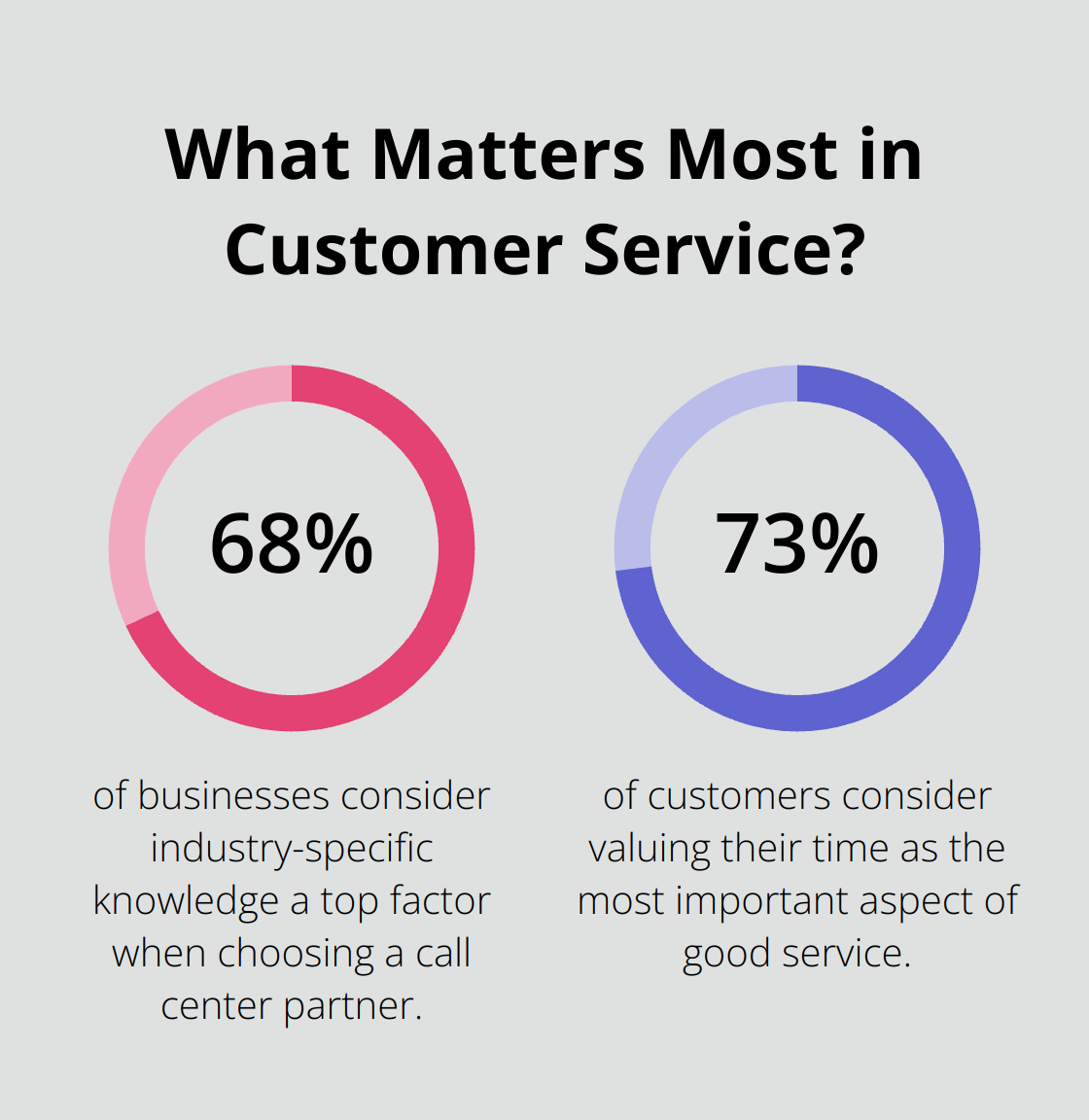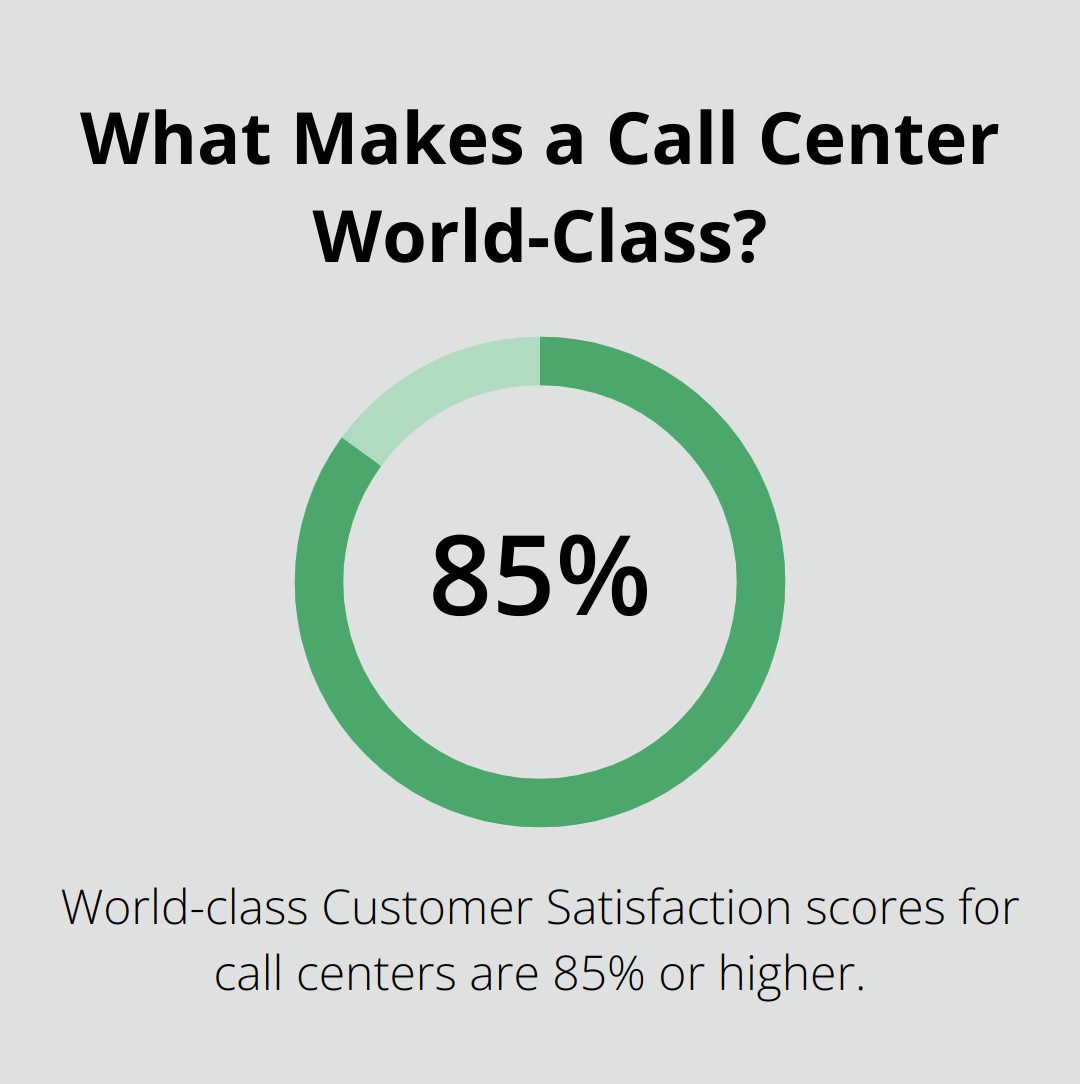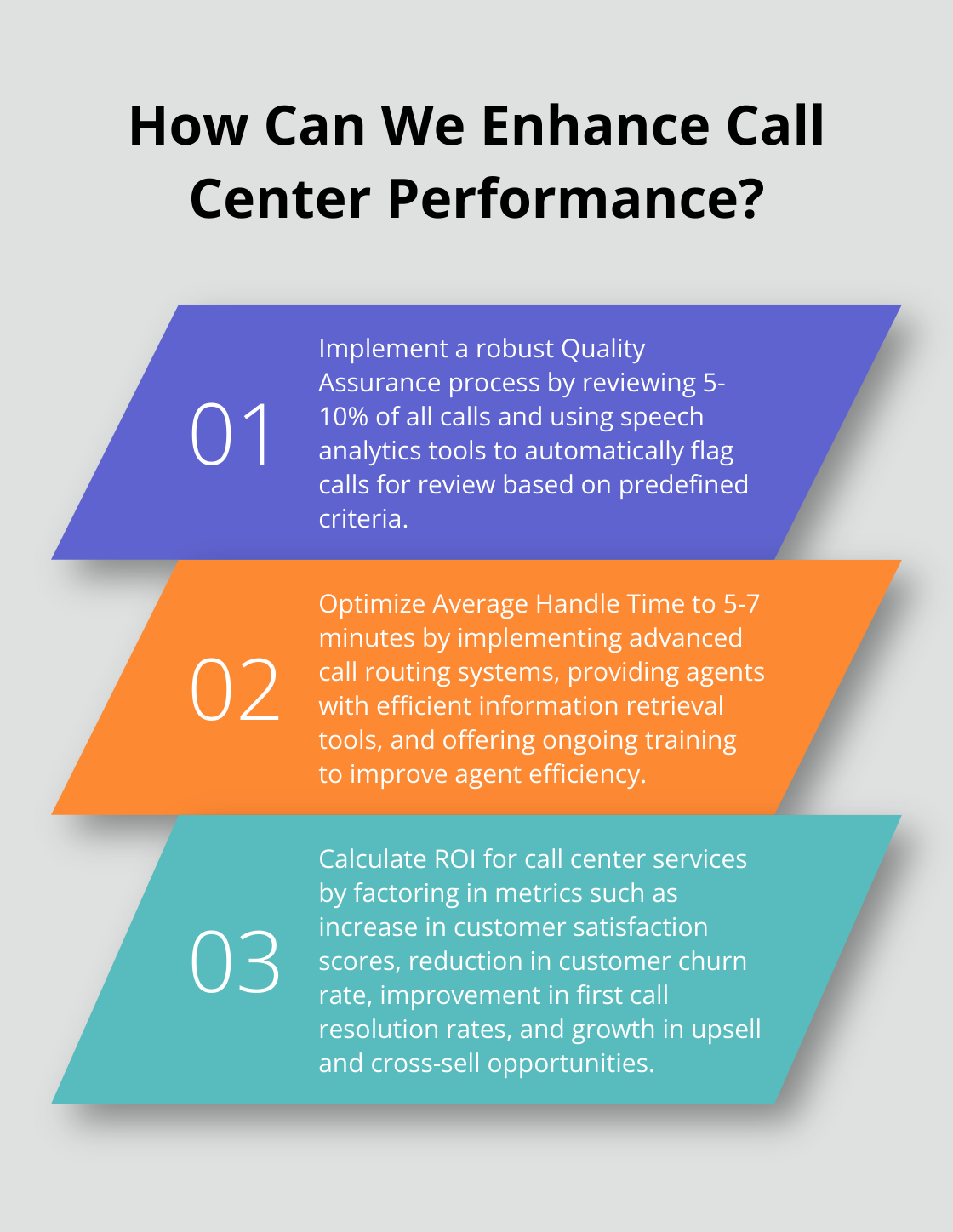Selecting the right US-based call center isn’t just a cost decision — it’s a strategic one. The partner you select will shape how your customers feel about your brand, influence retention, and impact your long-term growth.
At Outsource Consultants, we help businesses navigate this choice every day. Whether you’re scaling support, reducing internal overhead, or trying to elevate your CX game, here’s what you need to know when selecting US call centers.
What Sets Top US Call Centers Apart
The selection of a US call center for domestic customer service can profoundly impact your business’s reputation and success. Several key factors distinguish exceptional call centers from the rest.
Strategic Location for Optimal Coverage
A call center’s location significantly affects its service efficiency. Nearshore call centers are a great benefit for many companies looking to expand their customer service, scale up or down accordingly in different seasons. This geographical advantage often results in shorter wait times and higher customer satisfaction rates.
Think beyond borders — but also within them. US-based call centers offer:
-
Faster response times thanks to timezone alignment.
-
Higher customer satisfaction due to cultural fluency.
-
Stronger brand protection in regulated or sensitive industries.
Some companies also adopt a hybrid strategy, blending US onshore and nearshore support to manage seasonality and cost flexibility.
Industry-Specific Knowledge and Expertise
Call centers with specialized knowledge in your industry provide more accurate and efficient service. For instance, a center experienced in healthcare will better handle sensitive patient information and comply with HIPAA regulations. A Deloitte study found that 68% of businesses consider industry-specific knowledge a top factor when choosing a call center partner.
Advanced Technology Integration
The technological capabilities of a call center can dramatically enhance or hinder your customer service experience. Centers that utilize AI-powered chatbots, advanced IVR systems, and omnichannel support platforms often see significant improvements in their performance metrics. Studies show that companies using AI in their call centers see improved performance metrics.
Scalability and Peak Season Readiness
Your provider should be able to flex — up or down — without sacrificing quality. This matters if you’re in a peak-heavy business like retail, travel, or healthcare.
Scalable partners help you:
-
Avoid long wait times during busy periods.
-
Maintain consistent KPIs across demand swings.
-
Deliver continuity without breaking the budget.
Quality Assurance and Continuous Improvement
Top-tier call centers implement robust quality assurance processes and focus on continuous improvement. They regularly monitor calls, provide ongoing training to agents, and use customer feedback to refine their services. This commitment to excellence often translates into higher first-call resolution rates and improved overall customer experiences.

As you evaluate potential US call centers, consider these factors carefully. The right partner will not only meet your current needs but also adapt to your evolving requirements, positioning your business for long-term success in customer service delivery. Now, let’s examine how to effectively assess call center performance through key metrics and benchmarks.
How to Measure Call Center Performance
Effective evaluation of call center performance is essential for maintaining high-quality customer service. We focus on key metrics that provide actionable insights into call center efficiency and customer satisfaction.
First Call Resolution: The Gold Standard
First Call Resolution (FCR) is a critical metric in call center performance. E-commerce call centers achieve an average FCR rate of 75%, indicating their focus on resolving customer issues effectively. A high FCR rate indicates that agents can solve customer issues quickly. To improve FCR, call centers should:
- Invest in comprehensive agent training programs
- Provide easy access to up-to-date information
- Implement advanced knowledge management systems
Average Handle Time: Balancing Speed and Quality
While a low Average Handle Time (AHT) can indicate efficiency, it’s important not to sacrifice quality for speed. The ideal AHT varies by industry but generally falls between 5-7 minutes. To optimize AHT without compromising service quality, call centers can:
- Implement advanced call routing systems
- Provide agents with efficient tools for information retrieval
- Offer ongoing training to improve agent efficiency
Customer Satisfaction: The Ultimate Measure
Customer Satisfaction (CSAT) scores directly reflect the quality of service provided. The call center industry standard for a good CSAT score is 75% to 84%, with world-class scores being 85% or higher. To boost CSAT scores, call centers should:
- Focus on personalized service
- Train agents in active listening techniques
- Ensure prompt issue resolution
- Conduct regular customer feedback surveys (to identify areas of improvement)
Quality Assurance: Ensuring Consistent Excellence
A robust Quality Assurance (QA) process is the backbone of high-performing call centers. Leading call centers typically review 5-10% of all calls for quality. Effective QA processes include:
- Call monitoring
- Performance feedback
- Targeted coaching sessions
The implementation of speech analytics tools can significantly enhance the QA process by automatically flagging calls for review based on predefined criteria.

These key performance indicators provide a comprehensive view of call center effectiveness. The next section will explore the cost considerations and pricing models associated with US call centers, helping you make an informed decision that balances quality and budget.
The Real Costs of US Call Centers
Pricing Models Explained
US call centers offer two primary pricing structures: hourly rates and per-minute pricing. Hourly rates charge for the total time agents spend on calls and related tasks, suitable for businesses with predictable call volumes. Per-minute pricing bills only for actual talk time, which can benefit companies with fluctuating call volumes.

A recent industry report by ContactBabel reveals the average cost of an inbound call is $7.16 – 18% more than email and 42% more than a web interaction. This figure varies based on factors such as call complexity, industry, and location.
Hidden Costs to Watch For
When evaluating call center proposals, look beyond base rates. Many centers charge extra for services like call recording, reporting, or after-hours support. These additional fees can inflate your overall costs significantly.
A Frost & Sullivan study found that hidden costs can increase the total price of call center services by up to 30%. To avoid surprises, request a detailed breakdown of all potential charges and clarify what’s included in the base price.
Return on Investment Calculation
Measuring the return on investment (ROI) for call center services involves more than cost comparison. Consider the potential impact on customer retention, sales conversion rates, and brand reputation.
A Zendesk survey revealed that more than 50 percent of customers will switch to a competitor after multiple bad experiences, underscoring the importance of quality service in driving long-term business value.
To calculate ROI, factor in metrics such as:
- Increase in customer satisfaction scores
- Reduction in customer churn rate
- Improvement in first call resolution rates
- Growth in upsell and cross-sell opportunities
Cost Optimization Strategies
Looking to reduce spend without reducing impact? Try:
-
AI for FAQs and low-complexity inquiries
-
Better workforce management to reduce idle time
-
Ongoing agent training to improve FCR and AHT
-
Hybrid models that balance onshore and nearshore talent
Why Outsource Consultants for Selecting US Call Centers?
We make selecting a US call center simple, strategic, and low-risk.
Whether you need onshore agents, a bilingual team, or AI-augmented workflows, our vetted network of 1,500+ providers means you’ll get matched with the right partner — faster and more confidently.
We also offer:
-
Cost proposal tools and price calculators
-
Side-by-side vendor comparisons
-
Strategy guidance from CX advisors who’ve helped hundreds of companies
We’re not just helping you find a vendor — we’re helping you build the future of your CX.
Final Thoughts on Selecting US Call Centers
Selecting the right US onshore call center for domestic customer service needs will significantly impact your business’s success. Key factors to consider include strategic location, industry-specific expertise, technological capabilities, scalability, and quality assurance processes. Essential performance metrics such as first call resolution rates, average handle time, and customer satisfaction scores serve as indicators of a call center’s effectiveness.

Cost considerations play a vital role in the decision-making process, but it’s important to look beyond base rates and understand the full spectrum of pricing models and potential hidden costs. Calculating the return on investment and implementing cost optimization strategies will help businesses strike a balance between budget constraints and service quality expectations.
Outsource Consultants offers valuable resources for businesses seeking domestic customer service solutions. Their expertise in optimizing call center services and AI technology, combined with a vetted vendor network, can help businesses navigate the complex landscape of outsourcing options. The right call center partner is not just a service provider but a strategic ally in delivering exceptional customer experiences and driving business growth.
FAQs About Selecting US Call Center
1. What’s the benefit of using a US-based call center vs. offshore?
US-based centers offer better alignment with language, culture, and time zones — often improving CSAT and reducing handle times for domestic customers.
2. How do I evaluate a call center’s industry experience?
Ask about client case studies, vertical-specific compliance, and rep training programs tailored to your industry.
3. What’s the average cost of selecting a US call center?
Rates vary, but expect around $7–$10 per call. Be sure to factor in hidden costs like reporting or after-hours support.
4. Can I use AI and still keep a human touch in support?
Absolutely. AI should handle repetitive tasks, allowing agents to focus on high-value conversations. The result? Faster service and better customer experiences.
5. How does Outsource Consultants help with selecting US call centers?
We simplify the process by matching you with top-performing providers based on your needs, budget, and goals — all while staying vendor-neutral.






